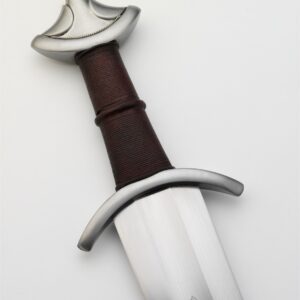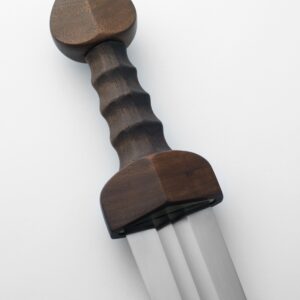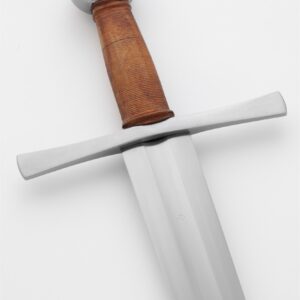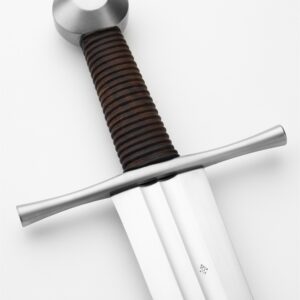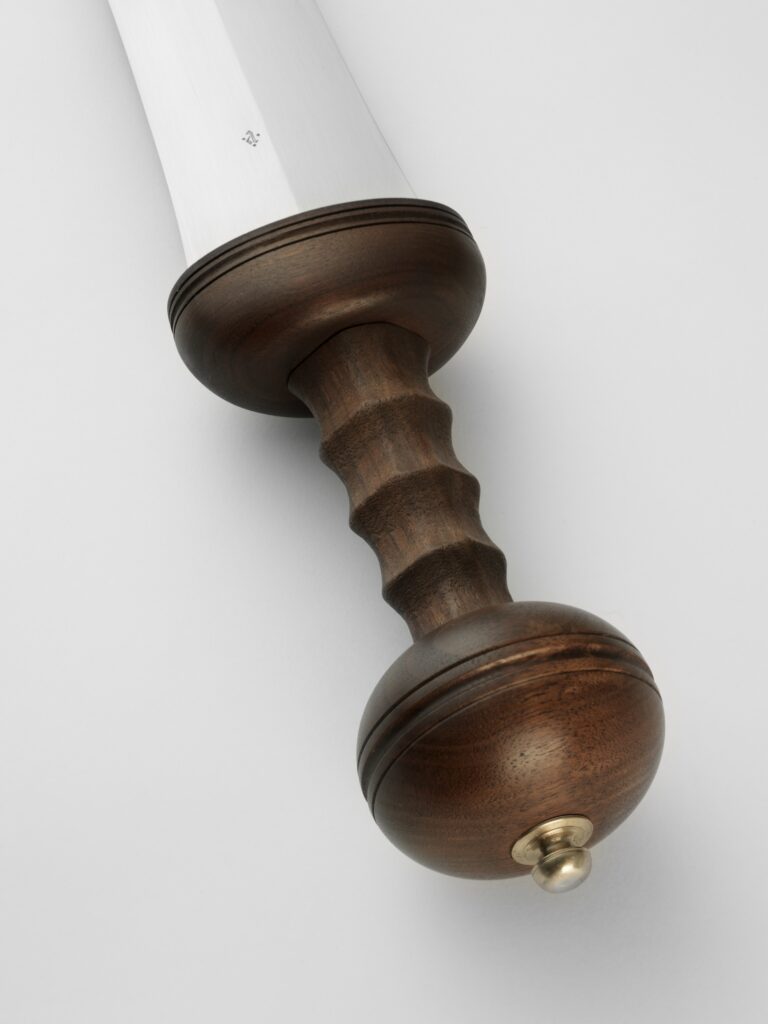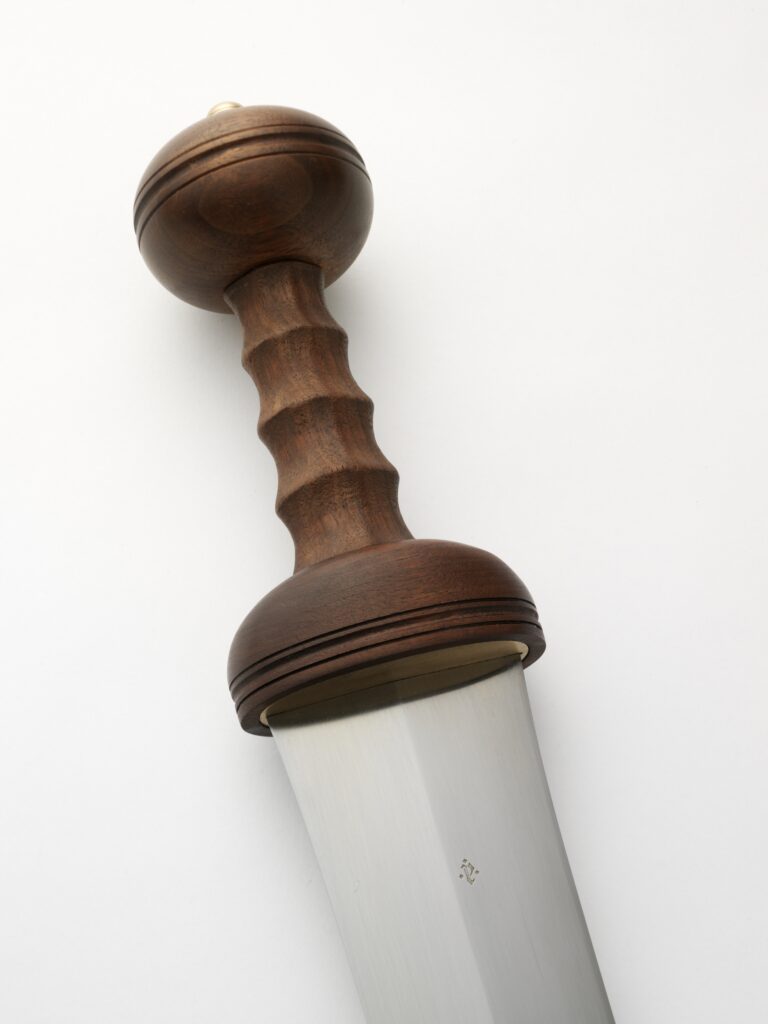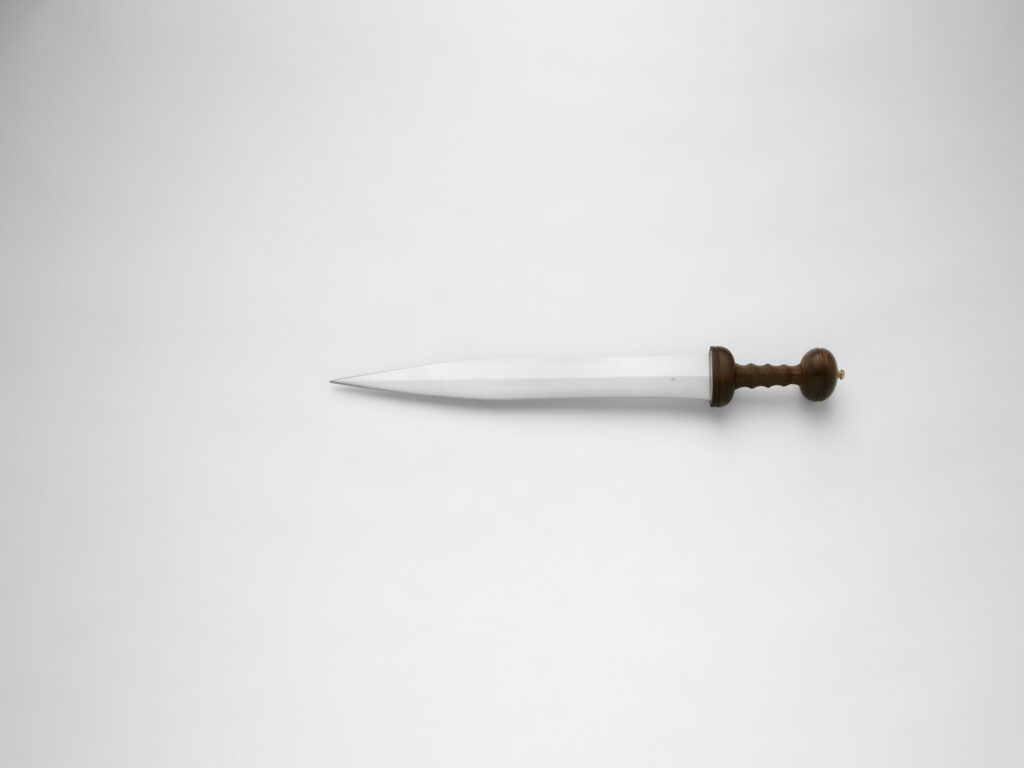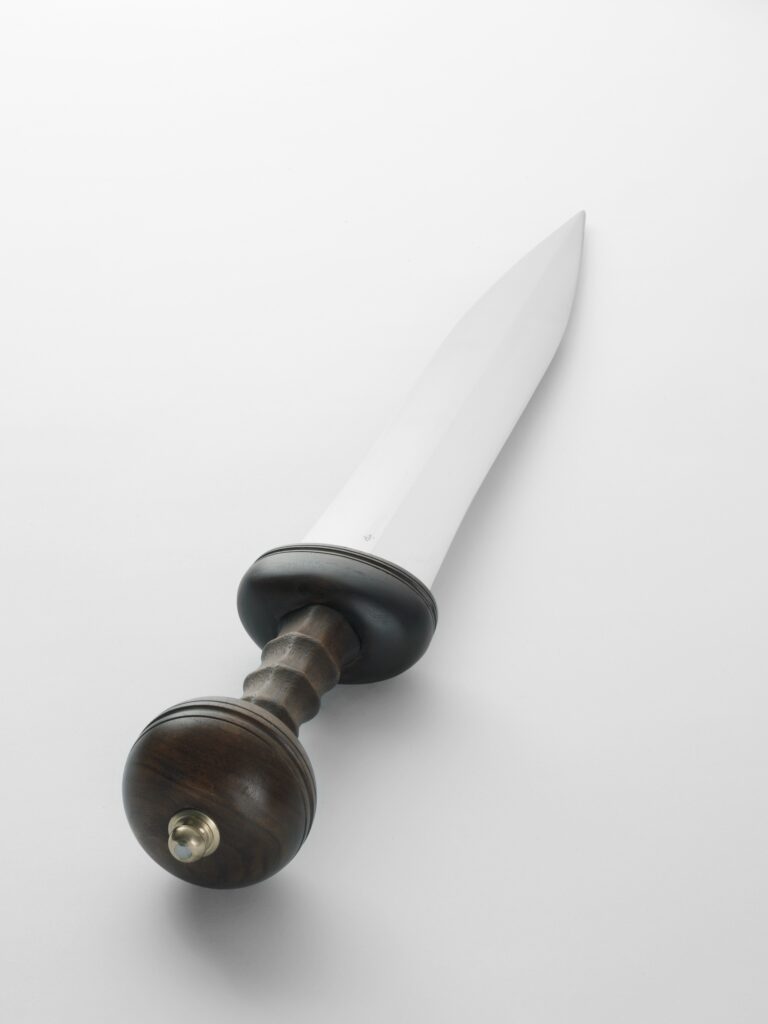(Mainz Gladius II)
The Mainz type gladius is an iconic Roman sword. This is the sword famously used by Roman soldiers in the early Imperial period. Our Augustus Mainz is a typical example of the classic subtype, with its broad base, gently waisted profile and long strong point. It saw use in the period from about 25 BC (or slightly earlier) to around 50 AD. The Roman Legions were renowned for the brutal fighting spirit of individual soldiers as well as the discipline and organization of the army units. Romans were ever keen on adapting successful ideas and tactics of their enemies. Over the centuries the arms and armor of the Roman armies changed as tactics evolved and were refined. After experiences in the Punic wars, where the Romans were impressed with Iberian warriors who used a medium length La Téne II sword (a weapon that survived in active use in the northern part of Spain long after Celtic warriors in other parts of Europe were favoring longer blades), Roman troops started using a sword they named the “gladius Hispaniensis”. Over time this sword became shorter and broader into the sword we know recognize as the Mainz type, (with its various sub types) and later culminated in the pragmatic and eminently practical”Pompeii” style stabbing sword.
The change of the longer Gladius Hispaniensis into the Mainz pattern is possibly as an adjustment for more efficient use in the Republican Legions and their specialized tactics. Rather than fighting as individual warriors (like the Continental Celts or warriors of the Germanic tribes) the Roman legions used a way of fighting where a relatively open formation allowed individual fighters room to effectively use their swords, while still benefiting from the support from comrades on each side. This tactic made good use of the ferocious fighting spirit of the individual legionnaires as well as the discipline of a highly trained army. An enemy was initially met with a volley of javelins, dealing pain, panic and death to the front ranks, testing their resolve and possibly slowing the advance. While the enemy was reeling from this first blow, the broad and short sword could be put to effective use in close quarter fighting that diminished the efficiency of the longer blades often favored by Celtic and Germanic warriors.
The Greek historian Dionysus of Halicarnassus (contemporary to Emperor Augustus 63 BC-14 AD) describes Roman tactics with swords against the Gauls in the 4th C BC. Dionysus describes events that is some 300 years earlier than his own times, but we might perhaps presume that the fighting techniques he describes were not anachronistic to his own period. The longer Gladius Hispaniensis was still in use by Romans in Dionysus time, but gradually gave way to the shorter Mainz type gladius. They were both effective cutting swords, even if thrusting was a favored tactic in close formations. “…Holding their sword straight out, they would strike their opponents in the groin, pierce their sides, and drive their blows through their breasts into their vitals. And if they saw any of them keeping these parts of the body protected, they would cut the tendons of their knees or ankles and topple them to the ground roaring and biting their shields and uttering cries resembling the howling of wild beasts…”
From the quote we can clearly see how the cut was accepted as a perfectly viable method to dispatch an opponent, if the thrust did not prove effective. Vegetius describes how recruits are trained using wooden swords against stout posts, as though attacking different parts of the opponents body. A crippling cut against the backside of the leg was included in these techniques.
The wide blade and long point of the Mainz pattern is a clever combination of qualities, allowing both to be strongly established in the design. The wide blade together with the long point section results in an effective distribution of mass, allowing powerful cuts as well as lightning fast and precise thrusts. The hilt works perfectly together with the blade. The facetted grip provides a clear indication of the direction of the edge and a reliable hold. Pommel and guard adds an ergonomic quality, providing both secure purchase and good control. In the thick of a fight when adrenalin surges though the veins and stress levels are sky high, a design like this helps a fighter retain a good awareness of the sword.
The hilt of our Augustus is crafted completely out of walnut. When bone was not used for the grip, a uniform use of wood like this would have been the norm. Pommel and guard locks on to the grip through lugs on the grip. This is a design that can be seen on surviving Roman hilts. It results in a very robust construction. The inlet guard plate and rivet button are bronze. The wood is treated by soaking in linseed oil for 24 hours, and then set aside for hardening over 48 hours. This seals the wood against moisture and hardens the surface somewhat. After polish it shows a deep luster that reveals the grain and color of the wood.
Specifications
Overall length: 27.625″ (70 cm)
Blade length: 20.25″ (51.75 cm)
Blade width: 2.625″ (6.67 cm)
CoP: n/a
CoB: 4″ (10 cm)
Weight: 1 lb 13 oz (810 grams)
This sword is offered in a limited edition of only 500 collectible swords worldwide.
